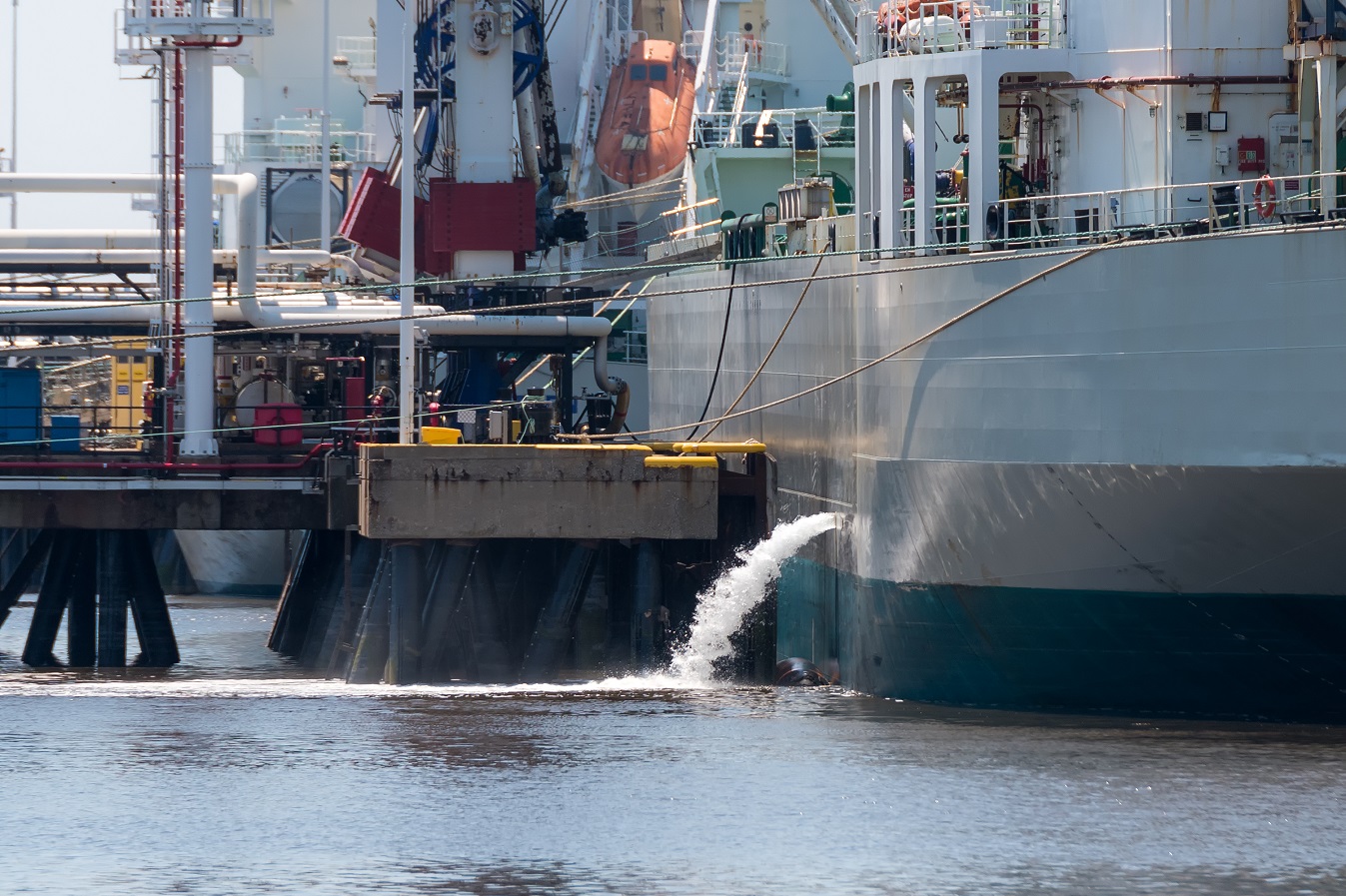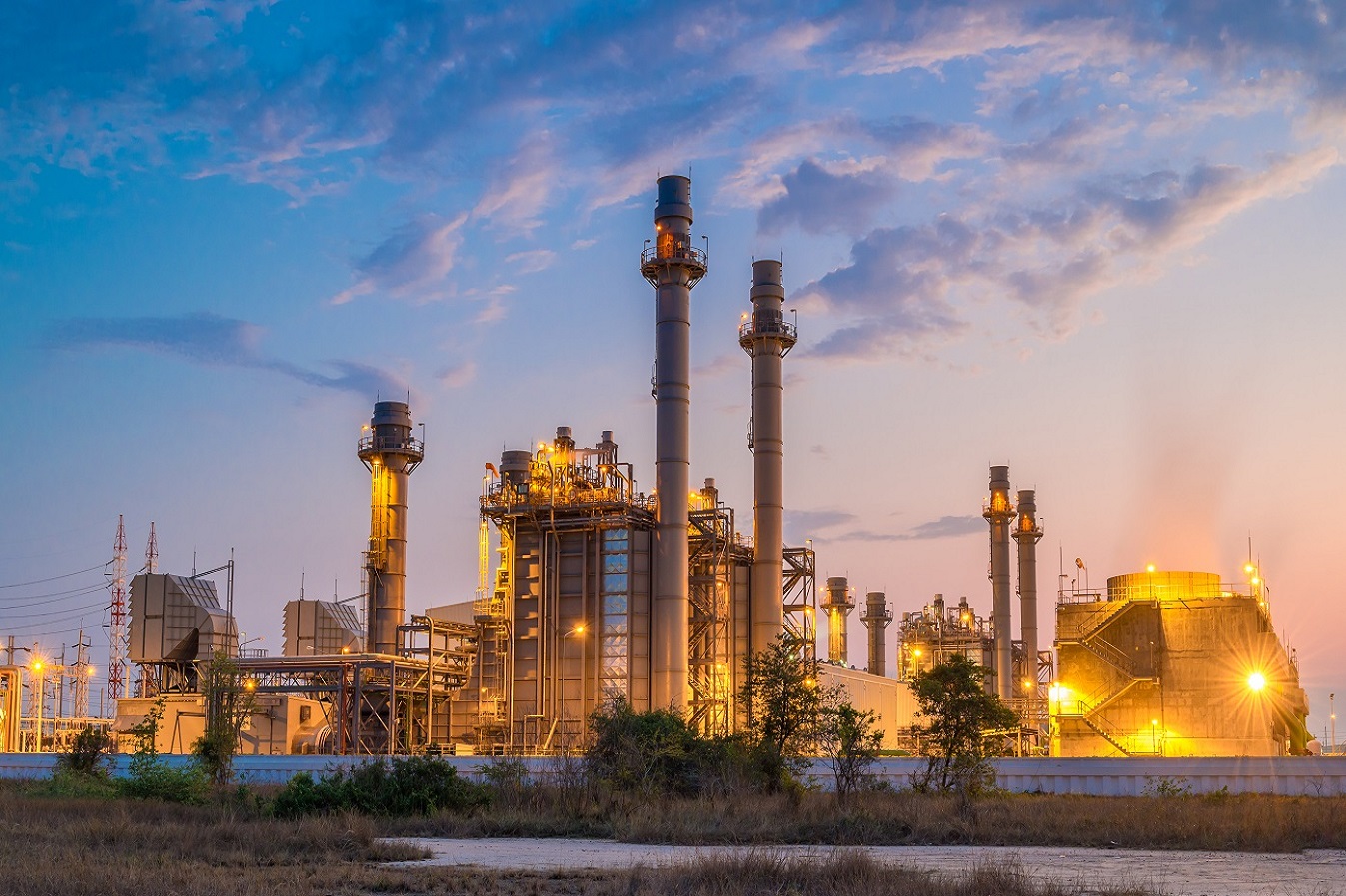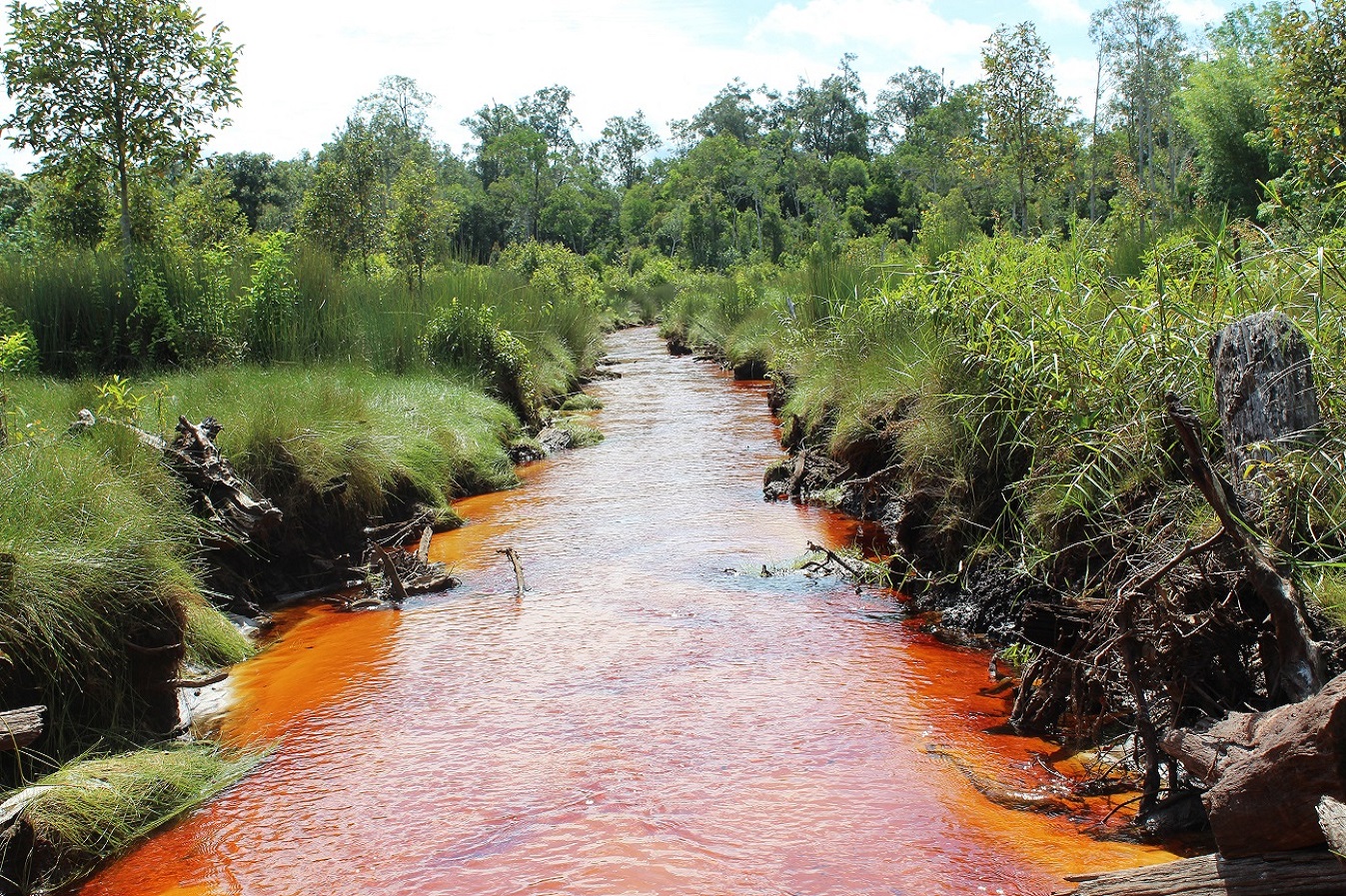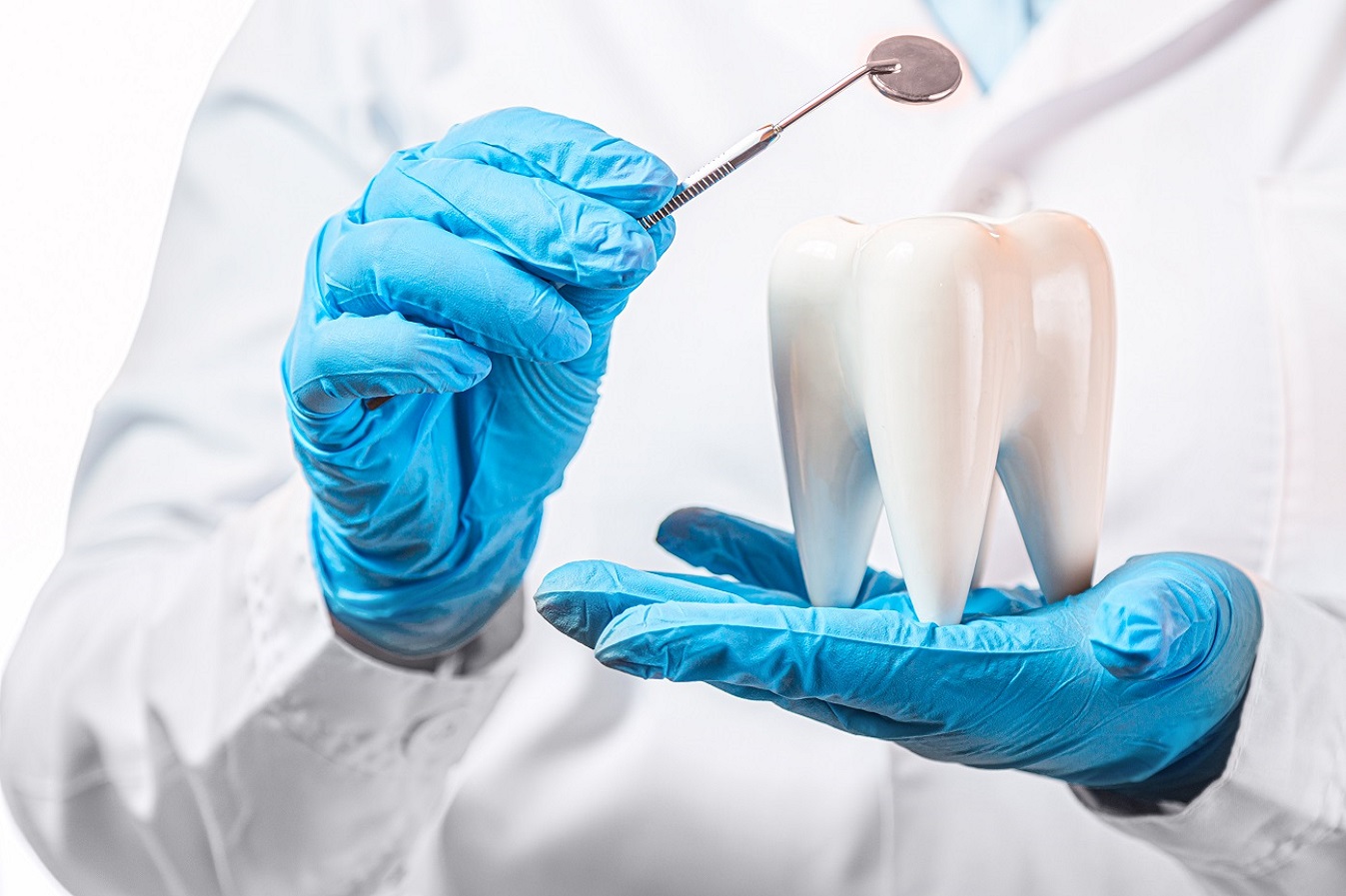Ship Ballast Water Treatment
TERMECA as Oxidizing biocides can remove or inactivate marine organisms in the ballast water. It can be effective on marine organisms and also prevent discharge water from becoming toxic. This solution acts by destroying organic structures of the microorganisms such as cell membranes or nucleic acids.

Large cargo ships use ballast water to balance their weight and keep them stable during a voyage. Ballast is extra weight added to a ship when it unloads its cargo – without it, the ship would pop out of the water like a cork and could become unstable.
When ships need ballast, water is easily pumped into ballast tanks from the sea or the inland waters where the ship is located, which adds weight to the bottom and sides of the vessel. Ballast water is pumped out into the ocean when it is no longer needed (when the weight of the ship needs to be lightened) – for example, when the ship is taking on cargo.
Ballast tanks are an integral part of a ship’s design with their number and size varying according to the vessel’s type and construction. but generally, ballast equates to 25% to 30% of the weight the ship can carry – including cargo, fuel, crew, passengers, food, and water – or its dead weight tonnage.
So as we mentioned ballast water is essential for the safety of the ship, ballast water can be harmful to the marine environment. Loading and unloading untreated ballast water can pose a major threat to the environment, public health and the economy as ships become a carrier for the transfer and spread of threatening invasive aquatic species, from one part of the world’s oceans to another.
When ballast water is pumped into a ship, sediment and microscopic organisms are also transferred into the ballast tanks. The spread of these invasive species and organisms (such as bacteria, microbes, small invertebrates, eggs, cysts, and larvae of various) is now recognized as one of the greatest threats to the ecological and economic well-being of the planet.
Many of these organisms can survive for extended periods in inhospitable environments, When the ballast water is discharged, the organisms are released into the local marine environment (including a ship’s ballast tanks) and can threaten the Indigenous way of living as Indigenous species share a deep connection with nature, its biodiversity, wildlife and waters.
They have a long and historic relationship with the land that feeds them, treating it with care and respect. Many communities still harvest their food and medicine from the land. When invasive species disrupt the availability of native fish and shellfish they threaten the viability of local food sources and fisheries, which causes a significant impact in these communities.
The International Maritime Organization (IMO) proceed with an International Convention for the Control and Management of Ships’ Ballast Water and Sediments commonly known as the Ballast Water Management Convention.
The Convention, which came into force in September 2017, aims to prevent the spread of harmful aquatic organisms from one region to another, by establishing standards and procedures for the management and control of ships’ ballast water and sediments. So based on the Ballast Water Management Convention all vessels must be retrofitted with a ballast water management system by 2024 to meet the Ballast Water Management Convention’s standard.
Ballast water management systems eliminate the organisms that can be found in ships’ ballast water and they generally treated ballast water in a two-stage process through which the solid particles in the water are first separated before the water is treated using one or more technologies to destroy potentially harmful marine organisms in the water or sediments.
So Ballast Water Management systems use or combine different technologies such as filters, light, ultrasound, heat, electricity, and magnetic fields (Physical disinfection) and chemicals disinfection.
Chemical Treatment of Ballast Water
Biocides (Oxidizing and non-oxidizing) are disinfectants that have been tested to potentially remove invasive organisms from ballast water. Biocide includes two methods:
When ships need ballast, water is easily pumped into ballast tanks from the sea or the inland waters where the ship is located, which adds weight to the bottom and sides of the vessel. Ballast water is pumped out into the ocean when it is no longer needed (when the weight of the ship needs to be lightened) – for example, when the ship is taking on cargo.
Ballast tanks are an integral part of a ship’s design with their number and size varying according to the vessel’s type and construction. but generally, ballast equates to 25% to 30% of the weight the ship can carry – including cargo, fuel, crew, passengers, food, and water – or its dead weight tonnage.
So as we mentioned ballast water is essential for the safety of the ship, ballast water can be harmful to the marine environment. Loading and unloading untreated ballast water can pose a major threat to the environment, public health and the economy as ships become a carrier for the transfer and spread of threatening invasive aquatic species, from one part of the world’s oceans to another.
When ballast water is pumped into a ship, sediment and microscopic organisms are also transferred into the ballast tanks. The spread of these invasive species and organisms (such as bacteria, microbes, small invertebrates, eggs, cysts, and larvae of various) is now recognized as one of the greatest threats to the ecological and economic well-being of the planet.
Many of these organisms can survive for extended periods in inhospitable environments, When the ballast water is discharged, the organisms are released into the local marine environment (including a ship’s ballast tanks) and can threaten the Indigenous way of living as Indigenous species share a deep connection with nature, its biodiversity, wildlife and waters.
They have a long and historic relationship with the land that feeds them, treating it with care and respect. Many communities still harvest their food and medicine from the land. When invasive species disrupt the availability of native fish and shellfish they threaten the viability of local food sources and fisheries, which causes a significant impact in these communities.
The International Maritime Organization (IMO) proceed with an International Convention for the Control and Management of Ships’ Ballast Water and Sediments commonly known as the Ballast Water Management Convention.
The Convention, which came into force in September 2017, aims to prevent the spread of harmful aquatic organisms from one region to another, by establishing standards and procedures for the management and control of ships’ ballast water and sediments. So based on the Ballast Water Management Convention all vessels must be retrofitted with a ballast water management system by 2024 to meet the Ballast Water Management Convention’s standard.
Ballast water management systems eliminate the organisms that can be found in ships’ ballast water and they generally treated ballast water in a two-stage process through which the solid particles in the water are first separated before the water is treated using one or more technologies to destroy potentially harmful marine organisms in the water or sediments.
So Ballast Water Management systems use or combine different technologies such as filters, light, ultrasound, heat, electricity, and magnetic fields (Physical disinfection) and chemicals disinfection.
Chemical Treatment of Ballast Water
Biocides (Oxidizing and non-oxidizing) are disinfectants that have been tested to potentially remove invasive organisms from ballast water. Biocide includes two methods:
- Oxidizing
- Non-Oxidizing
Oxidizing biocides: Oxidizing biocides are general disinfectants such as chlorine dioxide and hydrogen peroxide used to inactivate organisms in the ballast water.
Non-oxidizing biocides: Non-oxidizing biocides are a type of disinfectant which when used interfere with the reproductive, neural or metabolic functions of the organisms.
TERMECA as Oxidizing biocides can remove or inactivate marine organisms in the ballast water. It can be effective on marine organisms and also prevent discharge water from becoming toxic. This solution acts by destroying organic structures of the microorganisms such as cell membranes or nucleic acids.
TERMECA reacts mostly with living cells and to a much lesser extent, organic compounds. When it encounters a living organism, it penetrates the bacterial cell wall and disrupts vital internal processes, inactivating the organism and also removing slimy films of bacteria that adhere to surfaces of water storage tanks, known as a biofilm.
TERMECA does not react with water and retains its biocidal effectiveness over a limited pH range (as found in Sea Water) so it is considered environmentally friendly. Contrasting with other disinfectants, such as ozone and chlorine. TERMECA is a very specific disinfectant due in part to its limited reaction with organic compounds. Thus, the required dose of it in “dirty” water is much less than that of chlorine or ozone in the same water.
Non-oxidizing biocides: Non-oxidizing biocides are a type of disinfectant which when used interfere with the reproductive, neural or metabolic functions of the organisms.
TERMECA as Oxidizing biocides can remove or inactivate marine organisms in the ballast water. It can be effective on marine organisms and also prevent discharge water from becoming toxic. This solution acts by destroying organic structures of the microorganisms such as cell membranes or nucleic acids.
TERMECA reacts mostly with living cells and to a much lesser extent, organic compounds. When it encounters a living organism, it penetrates the bacterial cell wall and disrupts vital internal processes, inactivating the organism and also removing slimy films of bacteria that adhere to surfaces of water storage tanks, known as a biofilm.
TERMECA does not react with water and retains its biocidal effectiveness over a limited pH range (as found in Sea Water) so it is considered environmentally friendly. Contrasting with other disinfectants, such as ozone and chlorine. TERMECA is a very specific disinfectant due in part to its limited reaction with organic compounds. Thus, the required dose of it in “dirty” water is much less than that of chlorine or ozone in the same water.






















_1.jpg)